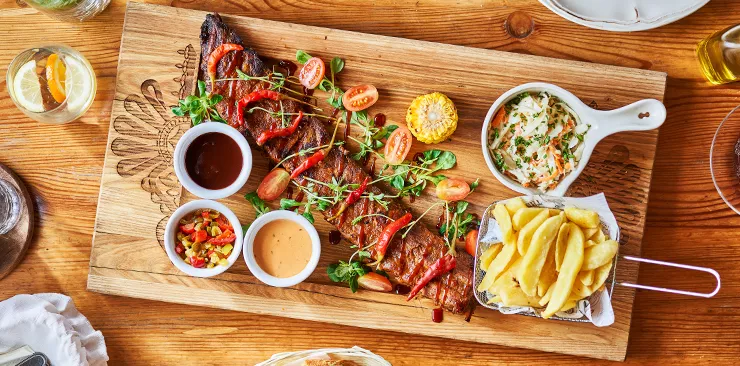





Where the salary comes from.
Have you ever wondered about the origin of the word “salary”? And why people are “worth their salt”? The answer lies in the value of the mineral when it was necessary for food preservation, and consequently, for surviving winters. As salt, the “white gold”, difficult to obtain, because it lay only in few places deep under the ground, the price of the commodity skyrocketed, making it an important currency, and yes, you could be paid in salt, hence the word “salary”.

According to a legend, when Princess Kinga left her homeland in Hungary, she tossed her ring into a salt-mine shaft. Then she set forth on a journey across the Carpathians, to meet Duke Boleslaus the Modest of Kraków she was betrothed to. As soon as she arrived, she made one of her retainers dig a hole in the ground, and in no time at all, he excavated a block of salt, and lo and behold, there was Kinga’s ring in it.
Legend aside, the “white gold” left over by prehistoric seas has belied our villages and towns for around 13 million years, and its deposits were first found while drilling a well not in Wieliczka but further away in Bochnia in 1248. Thus, Małopolska boasts not one but two historic salt mines – the older, though more modest in Bochnia, and the larger and more famous in Wieliczka. Both have been part of UNESCO World Heritage, as they were inscribed on its original list of just a hundred sites in 1978.
No photographs can portray what the mine has in store for you 135 m below the ground. Every corridor is unlike another, but these are the chambers that are downright staggering. The wealth or scarcity of engineering supports holding the ceilings suspended even 36 metres above your head, e.g., in Staszic Chamber in Wieliczka, where the first underground bungee jump was performed. The sheer size of the chambers and their meticulous décor, most lavish in the Chapel of St Kinga, do take your breath away. And then there come the pristine subterranean brine lakes.
Pristine is a good word, as the sodium, potassium, magnesium, and calcium ions saturating the air under the ground make it almost germ- and allergen-free. As soon as the local microclimate was discovered to be conducive to health and healing for the conditions of respiratory tracts, both the mines opened underground spas that offer both treatment and overnight pleasure stays.
You can visit both the Wieliczka and the Bochnia mines only in guided groups, and you can be sure that your guide will share with you plenty of legends and local tales. One of them concerns the salt dwarves, a gang of whom you will meet on the tourist route in Wieliczka. If the guide only tells you what you need to do to them to get married, ask what to do to them to get divorced, although perhaps when there are no minors around. That much for the legends, a handful of useful facts and information can be found here.
Just imagine that the route you follow in Wieliczka is just 2% of all the known corridors hammered, chiselled, carved, and cut in rock salt.
Make sure you have taken warm clothing to the mines, as the temperature inside is fixed at c. 14°C (57°F).
Believe it or not, but some of the forms of underground entertainment are more than ingenious. Offering a boat ride along an underground brine canal may be obvious (that’s Bochnia), but what would you say to a spinning marathon, or a 12-hour relay race under the ground along a loop of 2.5 km (also Bochnia)?








